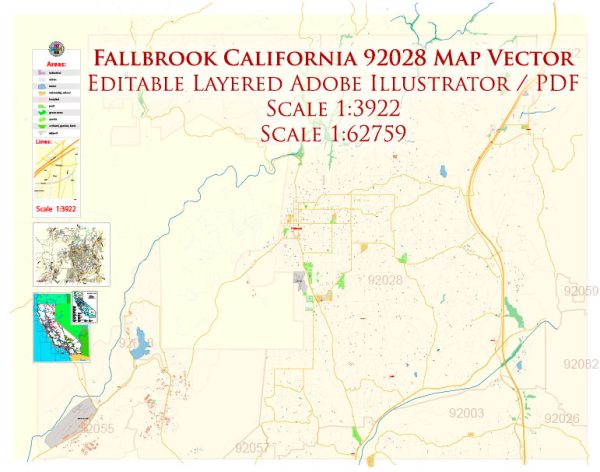Fallbrook, located in northern San Diego County, California, has a rich history of urban development that reflects the broader trends in Southern California. The area was originally inhabited by Native American tribes such as the Luiseno people before the arrival of Spanish explorers in the 18th century.
Here is a brief overview of the urban development history of Fallbrook:
- Early Settlement and Agriculture (Late 19th Century): Fallbrook’s history is closely tied to agriculture. The first permanent settlement in the area was established in the late 1800s, with early pioneers engaging in farming and ranching. The fertile soil and mild climate made it conducive to citrus and avocado cultivation, which eventually became key components of the local economy.
- Railroad and Infrastructure (Early 20th Century): The advent of the railroad played a crucial role in Fallbrook’s growth. The California Southern Railroad, later part of the Atchison, Topeka, and Santa Fe Railway, connected Fallbrook to other parts of Southern California, facilitating the transportation of goods and people. This improved accessibility contributed to the town’s development.
- Water Management and Growth (Mid-20th Century): Water availability has always been a significant factor in the development of Southern California. In Fallbrook, the construction of the Santa Margarita River dam in the 1940s enhanced water storage capacity, supporting agricultural expansion. The development of water infrastructure allowed for the continued growth of the community.
- Residential Development and Population Growth (Late 20th Century): In the post-World War II era, Fallbrook experienced a surge in residential development. The population grew as more people sought to live in the picturesque surroundings of this rural community while still being within commuting distance of larger urban centers. This period saw the development of housing tracts and the establishment of community services.
- Cultural and Economic Influences: Fallbrook’s development has been influenced by its unique cultural offerings. The area is known for its artistic community and hosts events such as the Fallbrook Film Festival and the Avocado Festival. The town’s identity is also shaped by its agricultural heritage, with avocado orchards and citrus groves contributing to both the local economy and the scenic landscape.
- Challenges and Preservation Efforts: Like many areas in California, Fallbrook has faced challenges related to urban sprawl, water management, and preserving its agricultural character. Efforts to balance growth with the preservation of open spaces and agricultural land have been ongoing, with local residents and organizations actively participating in these initiatives.
Today, Fallbrook maintains a balance between its agricultural roots and a growing residential community. The town’s history of urban development reflects the broader trends in Southern California, with a focus on agriculture, infrastructure development, and a unique blend of rural charm and suburban living.


 Author: Kirill Shrayber, Ph.D.
Author: Kirill Shrayber, Ph.D.